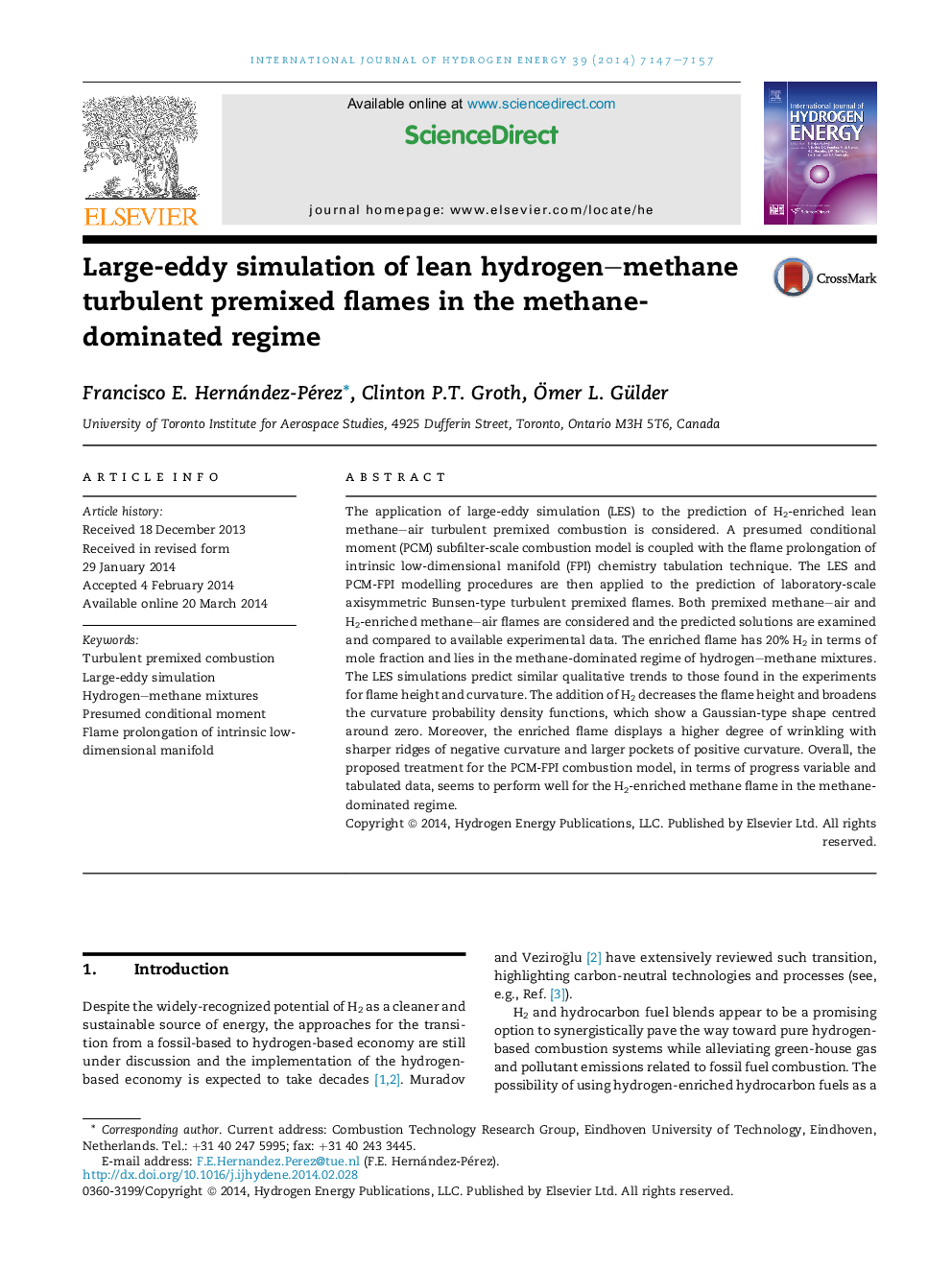| Article ID | Journal | Published Year | Pages | File Type |
|---|---|---|---|---|
| 1273469 | International Journal of Hydrogen Energy | 2014 | 11 Pages |
•A model for LES of H2-enriched CH4–air turbulent premixed flames is presented.•The model uses tabulated chemical data and a progress variable that accounts for NO.•LES of a Bunsen-type burner reproduce key features observed in the experiments.•H2 decreases the flame height and widens the curvature probability density function.•The model seems to perform well for H2-enrichment in the CH4-dominated regime.
The application of large-eddy simulation (LES) to the prediction of H2-enriched lean methane–air turbulent premixed combustion is considered. A presumed conditional moment (PCM) subfilter-scale combustion model is coupled with the flame prolongation of intrinsic low-dimensional manifold (FPI) chemistry tabulation technique. The LES and PCM-FPI modelling procedures are then applied to the prediction of laboratory-scale axisymmetric Bunsen-type turbulent premixed flames. Both premixed methane–air and H2-enriched methane–air flames are considered and the predicted solutions are examined and compared to available experimental data. The enriched flame has 20% H2 in terms of mole fraction and lies in the methane-dominated regime of hydrogen–methane mixtures. The LES simulations predict similar qualitative trends to those found in the experiments for flame height and curvature. The addition of H2 decreases the flame height and broadens the curvature probability density functions, which show a Gaussian-type shape centred around zero. Moreover, the enriched flame displays a higher degree of wrinkling with sharper ridges of negative curvature and larger pockets of positive curvature. Overall, the proposed treatment for the PCM-FPI combustion model, in terms of progress variable and tabulated data, seems to perform well for the H2-enriched methane flame in the methane-dominated regime.
